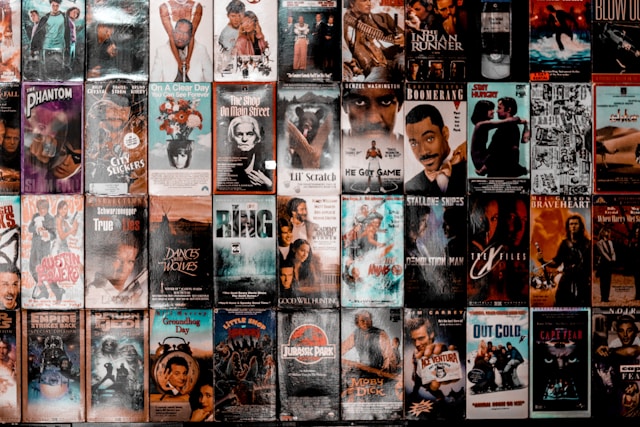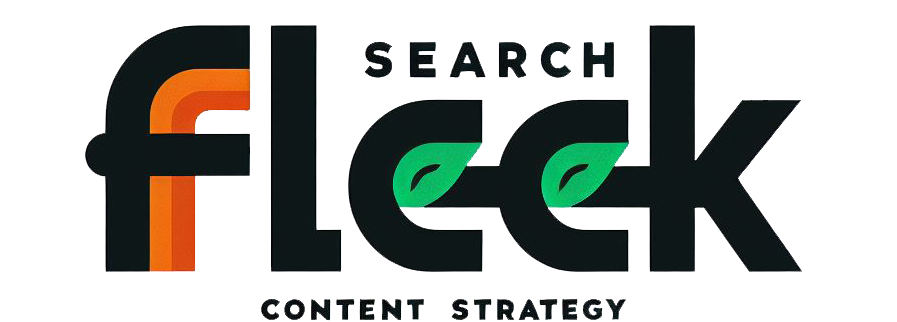The world of cinema is a captivating one, filled with stories that transport us, inspire us, and leave a lasting impression. If you’re a movie buff with a passion for sharing your thoughts and insights, then starting a movie blog might be the perfect creative outlet for you. This guide will equip you with all the knowledge and tools you need to launch your own successful movie blog.
Finding Your Focus
The vast landscape of movies can be overwhelming. To truly make your mark, it’s crucial to carve out a niche for your blog. This niche could be based on a specific genre (e.g., sci-fi, independent films), a particular era of cinema (e.g., classic Hollywood, French New Wave), the works of a beloved director (e.g., Christopher Nolan, Quentin Tarantino), or even a dedicated fan base for a specific film series (e.g., Star Wars, Harry Potter).
Here’s how to find the right niche for your movie blog:
- Passion and Expertise: Consider what types of movies you’re most knowledgeable and passionate about. What excites you the most about film?
- Researching Trending Topics: Look for movie genres or topics that are gaining popularity online. Tools like Google Trends can be helpful in identifying these trends.
- Analyzing Existing Blogs: Research other movie blogs in your chosen niche. See what they’re doing well and identify any gaps you could potentially fill.
- Finding the Sweet Spot: Strike a balance between a niche that is popular enough to attract an audience and one that isn’t too saturated with existing blogs.

Having a niche offers several advantages:
- Targeted Audience: By focusing on a specific area of cinema, you’ll attract a more targeted audience who share your interests.
- Establishing Authority: As you consistently produce high-quality content within your niche, you’ll become recognized as an expert in that area.
- Brand Identity: A well-defined niche helps you develop a unique brand identity for your blog, making it stand out from the crowd.
Building Your Platform
Now that you have a clear vision for your blog, it’s time to build your online home. Here’s a breakdown of the key steps involved:
Choosing a Blogging Platform:
Several popular blogging platforms cater to aspiring bloggers. Here are a few of the top contenders:
WordPress:
This open-source platform offers a high degree of flexibility and customization, making it a great choice for those who want complete control over their blog’s design and functionality. There’s a free version with basic features, and paid plans offer additional features and storage space.
Blogger:
This user-friendly platform from Google is a great option for beginners. It’s completely free and integrates seamlessly with other Google products like Google Analytics and AdSense. However, customization options are somewhat limited compared to WordPress.
Wix:
This platform offers a drag-and-drop website builder that makes creating a visually appealing blog effortless. Wix offers both free and paid plans, with the paid plans removing Wix branding and offering more storage space.
Consider factors like ease of use, customization options, scalability (ability to handle increased traffic), and pricing when making your choice.
Securing Your Domain Name:
Your domain name is your blog’s unique address on the internet. Here are some tips for choosing a memorable and relevant domain name:
- Keep it Short and Catchy: Aim for a domain name that is easy to remember and spell.
- Keyword-Rich: Include relevant keywords that reflect your niche to improve search engine visibility.
- Brandable: Choose a name that reflects your blog’s personality and brand identity.
Once you’ve chosen a domain name, you’ll need to register it through a domain registrar like Namecheap or GoDaddy.
Web Hosting Explained:
Your blog needs a place to live on the internet. This is where web hosting comes in. A web hosting provider stores your blog’s files and makes them accessible to visitors. There are different types of web hosting:
Shared Hosting:
This is the most affordable option, where your blog shares server space with other websites. It’s a good choice for beginners with low traffic.
VPS (Virtual Private Server) Hosting:
This offers more dedicated resources and improved performance compared to shared hosting. Suitable for blogs with moderate traffic.
Dedicated Hosting:
This provides the highest level of control and performance, but it’s also the most expensive option. Ideal for high-traffic blogs.
Choose a reliable web hosting provider that offers a plan that meets your needs and budget.
Designing Your Blog:
First impressions matter, and the design of your blog plays a crucial role in attracting and retaining readers. Here are some key aspects to consider:
- User-Friendly Navigation: Ensure your blog has a clear and intuitive navigation menu that allows visitors to easily find the content they’re looking for.
- Visually Appealing Design: Choose a theme that is aesthetically pleasing and complements your niche. Many platforms offer a variety of free and premium themes to choose from.
- High-Quality Images: Use high-resolution images and videos throughout your blog to enhance the visual appeal and break up text. Consider copyright restrictions when using images.
- Mobile Responsiveness: In today’s mobile-first world, it’s essential to have a blog that looks good and functions flawlessly on all devices (desktops, tablets, smartphones).
Content is King: Crafting Compelling Posts
The heart and soul of your movie blog lies in the content you create. Here’s how to develop engaging and informative posts that will keep your audience coming back for more:

Brainstorming Post Ideas:
Movie Reviews: This is a cornerstone of most movie blogs. Provide in-depth analysis of new releases, classic films, or hidden gems.
Top 10 Lists: Capitalize on the popularity of listicles by creating top 10 lists based on your niche (e.g., top 10 sci-fi films with mind-blowing twists, top 10 underrated performances).
Movie Analyses: Go beyond basic reviews and delve deeper into the film’s themes, directing style, cinematography, or acting choices.
Interviews: Conduct interviews with filmmakers, actors, or film critics to offer your readers exclusive insights.
Movie History Pieces: Explore the history of different genres, directors, or studios.
Movie News and Updates: Keep your audience informed about upcoming releases, film festivals, and industry news.
Crafting High-Quality Reviews:
Structure: Organize your reviews with a clear structure, including a synopsis of the film, your analysis of its strengths and weaknesses, and a final verdict.
Spoiler Etiquette: Be mindful of spoilers and avoid revealing major plot points in your review. You can offer vague hints to pique readers’ interest without ruining the surprise.
Respectful Tone: Maintain a respectful tone, even when critiquing a film. Focus on constructive criticism and avoid personal attacks.
Beyond Reviews: While reviews are a popular format, don’t be afraid to experiment with different content types to keep your blog fresh.
Movie recommendations: Curate lists of movies based on specific criteria (e.g., hidden gems on streaming platforms, movies for a specific mood).
Movie quizzes and polls: Engage your audience with interactive content like quizzes about movie trivia or polls about their favorite films.
Movie merchandise reviews: Review movie-related merchandise like soundtracks, apparel, or collector’s editions.
Spreading the Word: Effective Promotion Strategies
Building a loyal readership takes time and effort. Here are some effective strategies to promote your movie blog and reach a wider audience:
Search Engine Optimization (SEO):
Keyword Research: Use relevant keywords throughout your blog posts to improve your ranking in search engine results pages (SERPs).
Backlinks: Encourage other movie blogs and websites to link back to your content. This will increase your website’s authority and visibility in search engines.
Meta Descriptions and Title Tags: Craft compelling meta descriptions and title tags that accurately reflect your content and entice readers to click on your blog posts.
The Power of Social Media:
Create engaging social media profiles for your blog on platforms like Twitter, Facebook, and Instagram.
Share your content regularly and engage with your audience by responding to comments and questions.
Utilize relevant hashtags to reach a wider audience within the movie community.
Collaborate with other movie bloggers and influencers for cross-promotion.
Email Marketing:
Build an email list for your blog by offering incentives like exclusive content or early access to reviews.
Craft engaging newsletters to keep your subscribers informed about new posts, upcoming events, and special offers.
Guest Posting and Forum Participation:
Contribute guest posts to other movie blogs to reach a new audience and establish yourself as an expert.
Actively participate in online forums and discussions about movies. Share your insights and offer valuable contributions to the community.
The Business Side of Blogging: Exploring Monetization
While the primary focus of your blog should be your passion for movies, there are ways to potentially generate revenue from your efforts. Here are some popular monetization strategies you can explore to turn your movie blog into a source of income:

Display Advertising:
Platforms like Google AdSense allow you to display targeted ads on your blog. You earn revenue whenever someone clicks on an ad.
This is a beginner-friendly option, but the income generated can be relatively low unless you have a high volume of traffic.
Affiliate Marketing:
Partner with companies that sell movie-related products like DVDs, Blu-rays, streaming service subscriptions, or movie merchandise.
Promote these products on your blog and include affiliate links. You earn a commission for every sale generated through your links.
Choose products relevant to your niche and ensure they offer value to your audience.
Selling Sponsored Content or Product Reviews:
Partner with studios, streaming services, or brands to create sponsored content promoting their movies or products.
Be transparent and disclose sponsored content clearly to your readers.
Maintain editorial integrity and only recommend products you genuinely believe in.
Offering Premium Content or Courses:
Develop exclusive content like in-depth movie analyses, filmmaker interviews, or script breakdowns and offer them as premium content for a subscription fee.
Create online courses on topics related to film criticism, screenwriting, or movie history and sell them through your blog.
E-commerce Store:
Design a dedicated section on your blog to sell movie-related merchandise like branded t-shirts, mugs, or posters.
This requires upfront investment in designing and creating the merchandise, but it allows for potentially higher profit margins compared to affiliate marketing.
Patreon:
Utilize platforms like Patreon to create a membership program where your audience can pledge recurring monthly donations to support your blog.
Offer exclusive rewards to your patrons, such as early access to reviews, behind-the-scenes content, or personalized recommendations.
Building a Sustainable Income Stream
It’s important to remember that building a sustainable income stream from your movie blog takes time and dedication. Don’t expect to become an overnight success.
Here are some additional tips to maximize your earning potential:
- Focus on Building Your Audience: The larger your audience, the more attractive your blog becomes to advertisers and brands.
- Content is Key: Consistently create high-quality content that provides value to your readers.
- Diversify Your Income Streams: Don’t rely on a single monetization method. Explore a combination of strategies to create a more stable income flow.
- Track Your Results: Monitor the performance of your monetization efforts and adjust your strategies accordingly.
Bonus Section: Resourceful Toolkit for Movie Bloggers
Here’s a curated list of helpful resources for aspiring movie bloggers:
- SEO Tools: Google Keyword Planner, Ahrefs, SEMrush
- Social Media Management Platforms: Hootsuite, Buffer, Later
- Web Design Resources: Canva, Unsplash, Pexels
- Copyright-Free Music and Sound Effects: Free Music Archive, Bensound
Remember, this is just a starting point. As you delve deeper into the world of movie blogging, you’ll discover a plethora of additional resources and tools to enhance your experience.
Start by exploring the tools and resources listed above, and don’t hesitate to research and experiment to find what works best for your specific blogging goals. With dedication and continuous learning, you’ll be well on your way to establishing yourself as a successful voice in the movie blogging community.
Conclusion
Starting a movie blog can be a rewarding journey that allows you to share your passion for film with the world. By following the steps outlined in this guide, you’ll be well on your way to launching a successful blog. Remember, the key ingredients are passion, dedication, and a commitment to creating high-quality content. So, grab your popcorn, crank up the projector (figuratively speaking!), and get ready to embark on this exciting adventure in the world of movie blogging!
Emon Anam, CEO of Search Fleek, isn't your typical digital guru. He brings a unique blend of financial expertise (former banking pro!) and digital marketing mastery to the table. A self-proclaimed "SEO Sherlock Holmes," Emon unlocks content secrets for local businesses and SaaS companies. But beyond the keyboard, he's a devoted family man, music enthusiast, and cricket champion. Let Emon weave your digital success story!
AI Writing Disclaimer
This post was initially researched and outlined by me. The content was then generated by an AI language model using the provided information. The final text has been reviewed and edited by me for accuracy and clarity.




